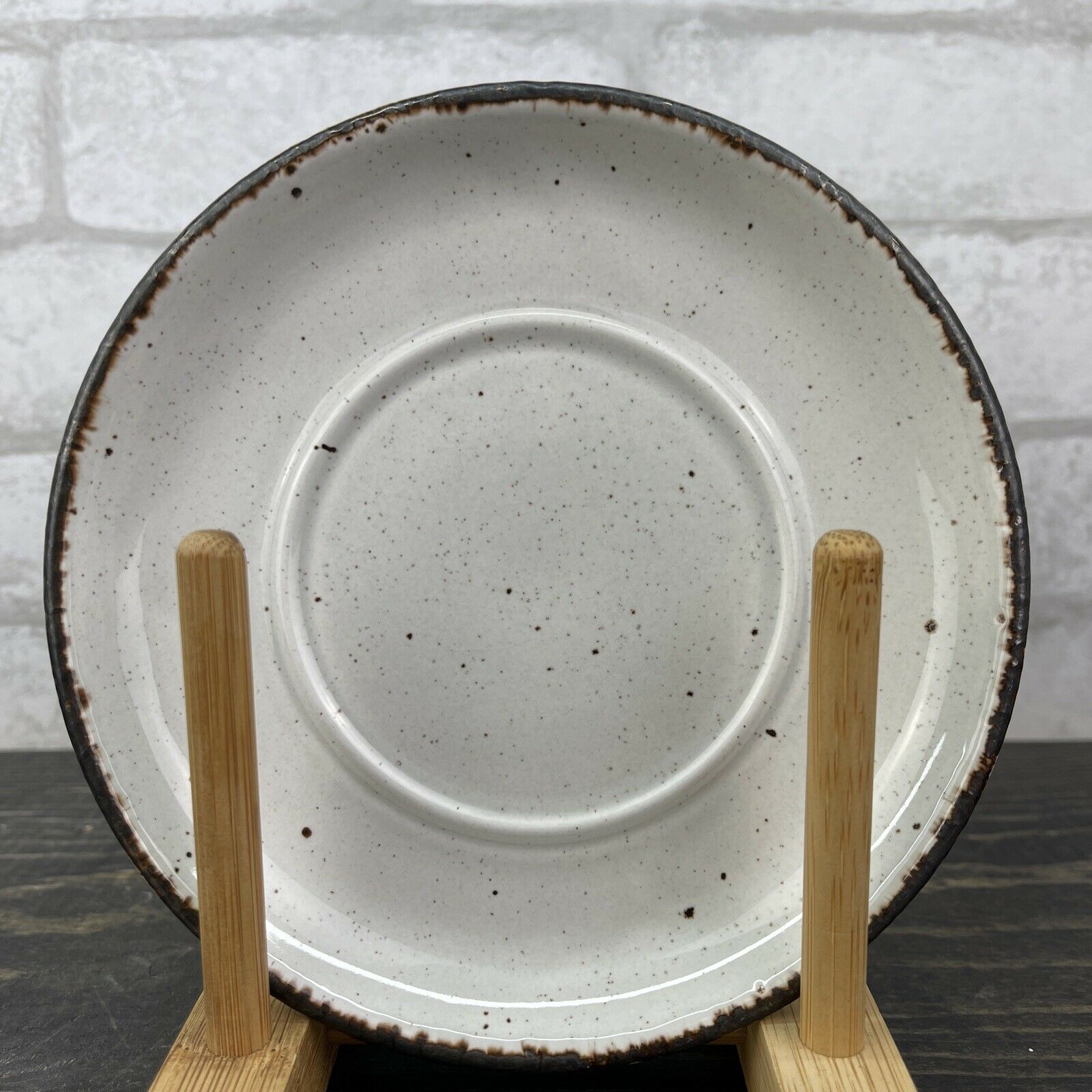-40%
WEDGWOOD MIDWINTER Stonehenge Wild Oats Speckled Saucers- Set of 7- RARE FIND
$ 18.98
- Description
- Size Guide
Description
WEDGWOODMIDWINTER Ltd
STONEHENGE
Wild Oats Pattern
Circa 1974
Set of 7 Saucers
Crafted in England
Microwave, Dishwasher and Oven Safe
Approximately 6" diameter
EXCELLENT CONDITION
NO CHIPS ~ NO CRACKS ~ NO CRAZING
M
IDWINTER
’
S
S
TONEHENGE
- D
ESIGN
ICON
OF
THE
1970
S
Under Roy Midwinter, the firm of W. R. Midwinter Ltd led British ceramic design in the 1950 and 1960s with new, modern shapes that, although radical, were a tremendous success in the marketplace. The Stylecraft, Fashion and Fine shapes were all successful, but the high development cost for the new tableware shapes demanded by the public led to financial difficulties in the late-1960s and in 1968 the Midwinter business merged with that of J. &. G. Meakin Ltd. The new enterprise was short-lived and in 1970, Josiah Wedgwood & Sons Ltd took over the merged Meakin and Midwinter business, keeping both names as separate earthenware brands. As part of Wedgwood, Roy Midwinter remained at the head of his former family business and in 1972 Wedgwood launched the Roy Midwinter-designed Stonehenge range of oven-to-table ware.
The Stonehenge range was designed by Roy Midwinter, modelled by the experienced company modelers Sydney and Derek Machin and was decorated with designs created by Jessie Tate, Eve Midwinter and other graphic designers.
The thick-walled ‘chunky’ shapes, studio pottery finishes, and vivid decoration were as new and radical as any of Midwinter’s earlier triumphs, and again it proved to be a design success. The first three patterns were followed by a further seven patterns released in August 1972. ‘Sun’, ‘Moon’ and ‘Earth’, now regarded as perhaps the most iconic Stonehenge patterns were released in March 1973. Advertising in Tableware International (Vol 3, March 1973) has the following description of the wares:
So simple it generates its own sophistication. In these days of mass production it is so refreshing to find the slight variations in decoration normally only associated with expensive hand-thrown studio pottery. Each piece is unique.
Although launched with a matt glaze, the majority of the Stonehenge range had a glossy ‘oatmeal’ glaze where reactive particles added to the glaze cause an irregular speckling over the surface of the ware. The wares were finished with hand-applied iron oxide banding to the edges that contributed to the ‘studio pottery’ look. Stonehenge connected immediately with the public spirit of the 1970s with the interest in self-sufficiency and birth of popular concern for environmental issues exemplified by the television comedy ‘The Good Life’ starring Richard Briars and Penelope Keith which screened between 1975 and 1978.
Jessie Tait and Even Midwinter were the main pattern designers for Stonehenge. The more restrained ‘Wild Oats’ by Eve Midwinter released in 1974 was enormously popular with the public.
The majority of Stonehenge patterns were released between 1972 and 1974. The earlier matt-glazed wares were withdrawn in the mid-1970s, however, most patterns remained in production until withdrawn by Wedgwood in 1982 or 1983.














